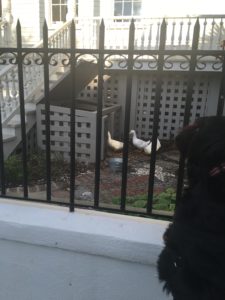 Pay bills. Pay respect. Pay attention. If you’re a responsible adult, you do these actions, often without prompting.
Pay bills. Pay respect. Pay attention. If you’re a responsible adult, you do these actions, often without prompting.
Yet, even when you want to pay attention to your leaders, co-workers, and trainers and learn from them, you may fail.
Attention is necessary for learning, and it’s a very complex action requiring different brain regions and circuitry.
Paying attention depends on your ability to focus on specific input while resisting the urge to be distracted from other stimulation (Can we look at another texted pet photo? Sure!), as I learned in my applied neuroscience program.
Even more challenging, you can only pay attention for about 20 minutes before you need to rest and recharge. This is true even if you’re highly motivated to focus on the content. The brain’s pre-frontal cortex, often referred to as the executive function, is involved, and it tires easily.
These lessons came flooding back to my consciousness as I participated in the 2016 MidSouth ATD Conference and Expo earlier this month in Nashville.
When I learned about the science of attention a few years ago, different neurons in my brain had fired together and achieved synchrony, which changed my brain. The maxim that “Cells that fire together, wire together” from Hebb’s Law helps explain this aspect of the brain’s neuroplasticity, that is, its ability to change.
And because I was interested in the topic of attention and deemed it important, this information has stayed in my long-term memory. (But there’s a lot of other stuff missing, either because I didn’t pay enough attention or didn’t think I needed to remember it….)
How can you help yourself and others pay attention and learn, especially if you’re the one trying to train someone and the topic is technical?
Here are three actions that help:
- Make sure the environment is conducive to learning. If you’re meeting face-to-face, the room needs to be physically comfortable without distractions. If you’re online, make sure it’s easy for people to sign on. The more you can make things comfortable and easy, the more you can reduce their cognitive load so they can pay attention to the substantive content you want to share.
- Connect the content to something that’s immediately meaningful or relevant. To get someone’s attention, you need to provide information or a diversion that piques their interest in the moment. Show them why your content matters to them and their job now, and how they can apply it after they leave your session.
- Mix things up after 20 minutes. Change your learning format every 20 minutes. For example, switch from lecture to discussion or Q&A. Show a video. Or ask people to stand up and stretch, or move to another seat. Any of these actions helps the prefrontal cortex re-charge itself. When you show a video or involve others through discussion, you also add an emotional component, which heightens people’s interest level and keeps them more engaged in the content.
With so many competing priorities—our own and others—we cannot expect that we or our colleagues will pay attention when we’re exposed to new information and people.
Rather than take attention for granted, we need to work at getting it and keeping it.
And when people do pay attention to us and our content, we owe it to them to provide a high return on their investment.
That’s why my best moment at the conference was when a participant told me she got more value from my one-hour session on learning the skill of building habits than she did from a day-long workshop on productivity tips.
The 2016 MidSouth ATD Conference organizers worked hard to follow the science of attention and they succeeded. Kudos to them and to the keynoter, Julie Dirkson of Usable Learning, who kicked off the conference with a thought-provoking interactive session on the science of learning.
By the way, if you’re interested in learning more about the role attention plays in learning, check out this NeuroLeadership Journal article The Science of Making Learning Stick: An Update to the AGES Model. (AGES stands for attention, generation, emotion, and spacing.)
Meanwhile, good luck paying attention….it’s harder work than we think.

Great content Liz, as usual.